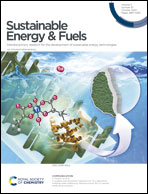Eco-energetic management of activated sludge derived from slaughterhouse wastewater treatment: pre-treatments for enhancing biogas production under anaerobic conditions
Abstract
In this paper different pre-treatments (involving temperature, pressure and enzymatic processes) were applied to activated sludge from slaughterhouse wastewater treatment with the aim of improving biogas production in anaerobic processes. In order to quantify the efficiency of the above-mentioned pre-treatments, the degree of hydrolysis was evaluated by removal of biodegradability parameters. In addition, the biomethane production and productivity were evaluated by biomethane potential tests. The results showed that all the pre-treated samples obtained higher removal percentages for total chemical oxygen demand, total solids and volatile solids obtaining between 2 and 3.2 times higher values than those without pre-treatments. However, regarding the removal of Total Suspended Solids (TSS) and biomethane yield (YCH4), the best results were obtained for two different pre-treatments: (i) enzymatic pre-treatment in combination with thermal pre-treatment at 120 °C (THE) obtaining % TSSremoval = 13.5 ± 0.8% and YCH4 = 425 mL CH4 g−1 VS and (ii) thermal pre-treatment by steam injection at 160 °C followed by a sudden decompression (THSD_160) with values of % TSSremoval = 9.56 ± 1.36% and YCH4 = 425 mL CH4 g−1 VS. Both pre-treatments were considered as optimal pre-treatments of activated sludge from slaughterhouse wastewater treatment, showing twice the productivity of non-pretreated sludge samples (WT).



 Please wait while we load your content...
Please wait while we load your content...